Eugenio Caballero (Mexico City, 1972) has built a reputation as one of the most important production designers worldwide. With over twenty years of experience, he has been responsible for the production design, set decoration and art direction of an endless number of film worlds.
Caballero explains that art design is not a discipline that limits itself to the world of aesthetics, but belongs to the field of narrative, to the emotional interpretation of scripts through color, volume and texture to convey to the viewer an idea or an emotion.
At age 17 he began his studies in Art History and Film History at the University of Florence. In Mexico, he began his film career alongside production designer Brigitte Brosch in film Romeo + Juliet, directed by Baz Luhrmann in 1996. Since then, he has collaborated in over twenty feature films, including Pan’s Labyrinth (Guillermo del Toro, 2006), The Impossible (J. A. Bayona, 2012), and Roma (Alfonso Cuarón, 2018).
Over the years, his work has received recognition with several awards, among which are an Academy Award for Best Achievement in Art Direction for Pan’s Labyrinth —shared with Pilar Revuelta—, two Ariel Awards for Best Art Direction and Best Set Design, and an Art Directors Guild Award.

The main benefit of cacao is a beverage they make and call chocolate [...]. It is a precious drink, wherewith they feast noble men who come or pass through their lands [...]. They use spices and much chili, they also make paste and say it is pectoral and for the stomach and against catarrh.8
José de Acosta, The Natural and Moral History of the Indies, 1590
Legend has it that Quetzalcóatl, god of air and winds, presented the Toltecs with a cacao tree and taught the women how to toast its seeds and grind them into a dough, to which they afterwards added water and flowers to make cacahuatl, a scented drink reserved only for its most beloved creatures.
Cacao is one of the greatest treasures that Mesoamerica bequeathed to the world. It arrived in Europe with the Spaniards, who after the conquest returned to the Peninsula loaded with the “food of the gods”. It was so important in the New World that it was used by the Aztecs as currency, food and drink.
Hernán Cortés recognized the great nutritional value of the cacao- based drink and distributed it among his soldiers. He wrote in his Letters of Relation: “A single cup of this drink gives the soldier enough strength to walk for an entire day without eating anything else”9. Cortés invited his countrymen to drink it with plenty of foam, in the style of the natives, but sweetened with sugar and then with milk.
The taste of chocolate conquered Europe and its energetic virtues were highly appreciated by students and religious people. The chocolate ritual became so popular that it turned into a palatial custom known as “warm reception”, which consisted in guests being offered a cup of chocolate with sweet rolls.
Each country experimented with chocolate, giving it new uses, and recipes. In the 17th century in England it was used for the first time in the preparation of a cake; and by the middle of the 19th century, in the Netherlands, the hydraulic press was used for the extraction of cacao butter, the raw material that revolutionized confectionery by opening the possibility to obtain solid chocolate, in order to create endless shapes and combinations.

Band Café Tacvba is recognized for its trend-setting and versatile style, fusing Mexican sound with influences such as rock and roll, punk, hip-hop and ska.
Rubén Albarrán, Meme (Emmanuel del Real Díaz), and siblings Joselo and Quique Rangel formed the band in Ciudad Satélite in the State of Mexico and booked their first gig at El Hijo del Cuervo in 1989. Thirty years, countless awards and over 10 albums later, it is considered by many as the most important Mexican rock band worldwide.
Their album Re (1994), which includes some of the band’s most iconic songs including “Las flores”, “Esa noche” and “La ingrata”, topped the 10 Greatest Latin Rock Albums of All Time list published by Rolling Stone magazine.10
Their concerts have been captured in two documentaries: Being: Café Tacvba (2010) by José Manuel Cravioto and Ernesto Contreras, who traveled with the band on a tour that included countries such as the United States, Spain and Japan —where they performed before Princess Hanako of Hitachi— and El objeto antes llamado disco: la película (2013), filmed in Chile, Argentina, the United States and Mexico.

Along with maize and beans, squash was one of the main ingredients in the milpa, the most important Mesoamerican crop-growing system. In An Account of the Things of Yucatán, Diego de Landa described the versatility of the uses of squash during the 16th century: “The seeds of some are good for making stews, others for eating roasted, and others for making vessels for their use”.11 This vine plant is one of the few of which fruits, flowers, seeds and guides can be used entirely.
The nutritional composition of squash, rich in magnesium and zinc, strengthens the immune, cardiovascular and nervous systems; it prevents chronic fatigue and depression, and optimizes learning in children. Its consumption also contributes to skin, bone and teeth health.

There are beautiful garbanceras,
wearing corsets and high heels,
but they must be calaveras,
just like all the others in the pile.
José Guadalupe Posada
La Catrina, icon of the celebration of the Day of the Dead, was born in hands of José Guadalupe Posada. The engraver, illustrator and cartoonist, originally from Aguascalientes, was born in 1852 and dedicated his life to portraying costumbrist, folkloric and social critic scenes that he published in printed media such as La Patria Ilustrada, Revista de México and El Ahuizote, among others.
Posada is considered a universal Mexican artist, whose work gave an account of the great contrasts of the revolutionary era: the marginalization, pain, death and discontent of the people, inevitably merged with life, pleasure and joy.
The image of the “Calavera garbancera” began to circulate in November 1913 —eleven months after Posada’s death— and together with the other skeletons and literary calaveras he illustrated a tradition that continued to live far beyond the death of its creator.
It was muralist Diego Rivera who took the garbancera from the pile and dressed her in an elegant gown and a feather stole to appear in the Dream of a Sunday afternoon in Alameda Park mural in 1947, and named her “Catrina”.

Sugar skulls and Mexican marigolds share the leading role in Mexican offerings during the celebration of the Day of the Dead. Tradition dictates that the name of our dead or of some living person for whom a long life is wished upon, must be written on the front of the skull.
This sweet is the Mexican version of alfeñique, an Arab technique inherited by the Spaniards during the Muslim conquest that, once they became conquerors, they brought to the New World along with sugarcane. It was used to replace the skulls that in pre-Columbian times were placed in tzompantlis to honor the gods.
The image of the sugar skulls, with their colorful decoration of shiny papers and icing, has become a symbol of Mexican tradition throughout the world.
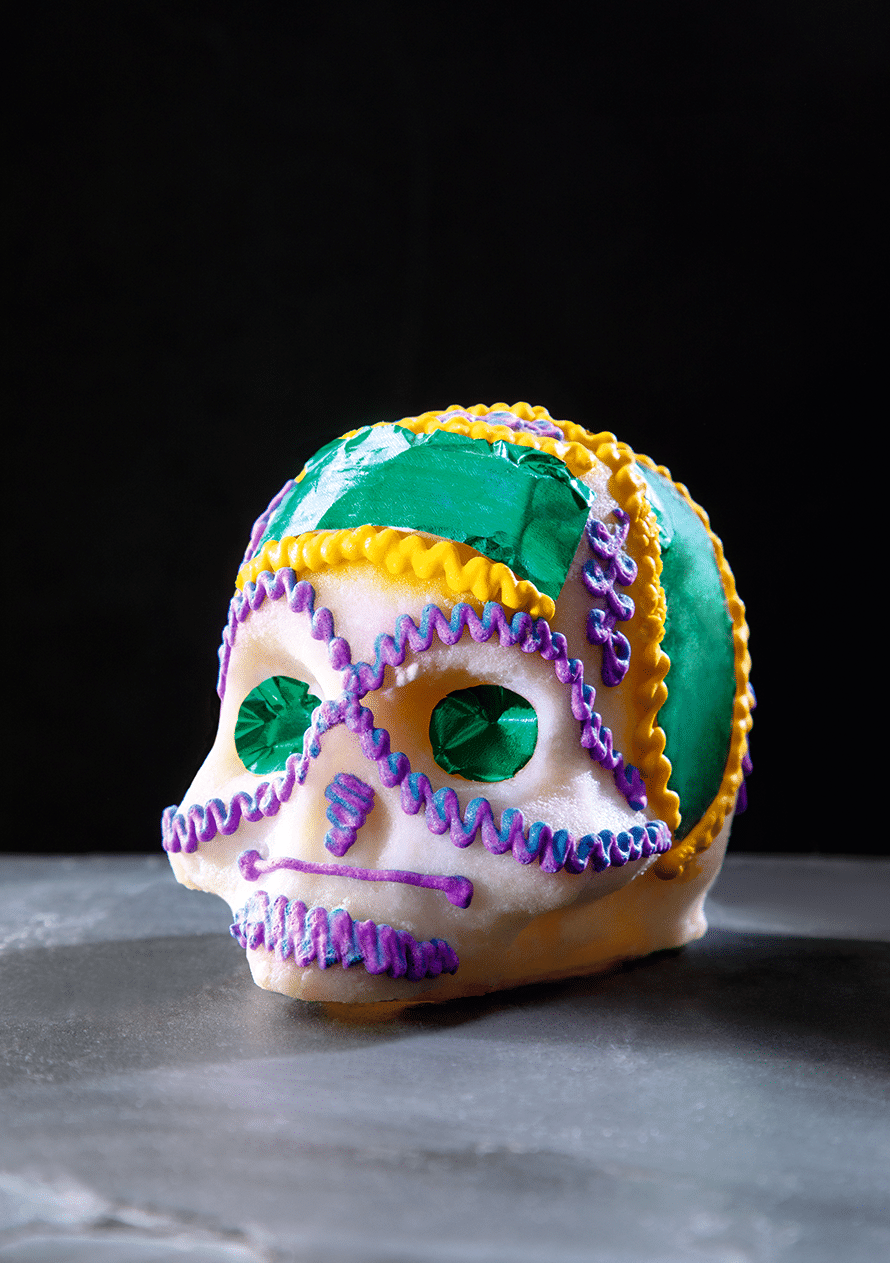
Gabriela studied History of Art when she opened Contramar, her first restaurant in Mexico City in 1998, and understood that her path would not be the galleries but culinary art.
Coming from a fishing family, her first encounter with the kitchen was during her childhood, with the family’s enthusiasm when deciding how to prepare each fishing payoff. Later, she set out to replicate the experience of coastal flavors in her restaurants.
Contramar has become a culinary destination for foreigners visiting our country, and in 2015 she opened Cala in San Francisco, California, a place that soon achieved great acceptance thanks to its menu offering Mexican seafood dishes. Both restaurants are the protagonists of the documentary A Tale of Two Kitchens (Netflix, 2019), part of the Rio Bravo, Rio Grande Project, which seeks to deepen relationships between Mexico and the United States through shared stories.
Gabriela’s gastronomic vision is also reflected in her book My Mexico City Kitchen, which includes the author’s 150 favorite recipes: Mexican fresh and simple dishes, that tear down the idea of unattainable Mexican cuisine for amateur cooks.

Textile art, sculptures, installations and performance are some forms that artist Pía Camil (Mexico City, 1980) has experimented with throughout her career. Her work reflects a story through warp and weft, and reflects on the psychology of consumption, also questioning the relationship between art and mass culture.
In 2015, she was brought into focus at the Frieze New York art fair, with the exhibition entitled Slats, Skins & Shop Fittings, which featured pieces that were somewhere in between the functional and the aesthetic. As a result, eight hundred ponchos made from second-hand fabrics and waste rescued from La Merced factories were given away to the visitors.
Her work has been exhibited in important galleries in Mexico, Colombia, France and the United States. She has also been distinguished with awards such as the European Honors Program at the Palazzo Cenci in Rome, Italy in 2001.

Sweet potato is among the main tuber crops in the world. Its name in Spanish comes from the Nahuatl word camohtli, which means “edible root”.
Historian Cristina Barros tells the story of how this tubercle saved millions of Chinese from starvation in the 1960s, explaining why its cultivation is sought and respected in China.
Due to its high content of carbohydrates, fiber, antioxidants, beta-carotenes, vitamins and minerals, sweet potato’s nutritional value is greater than that of potatoes, a great reinforcement in cases of malnutrition. For this reason, in some regions of Africa they refer to it as the “protector of children”. In fact, in Mexico there is a program dedicated to promoting the use of sweet potato in baby food.
The variety of wild sweet potato, which grows around Lake Chapala, Jalisco, has been attributed with medicinal properties, especially as a hormonal regulator in climacteric states.

This is how the children’s basketball team native to the Triqui ethnic group in the Oaxaca mountain range is known. The team has stood out for its great performance and because its members prefer to play their matches barefoot.
These young athletes belong to the program of the Indigenous Basketball Association of Mexico (ABIM), created by coach and primary school teacher, Sergio Zúñiga, who uses sport as a vehicle to forge their competitive spirit, keeping them away from violence and bringing them closer to discipline and studying. To be part of the team one needs to be a student with a minimum 8.5 average in school grades, speak the mother tongue, help with household chores and be well behaved at school.
In 2013 they inspired many people around the world with their story when they made it to their first international tournament. That same year the government of Los Angeles, California, established December 27 as the “Day of the Triqui basketball team” in acknowledgement of their sporting achievements. During the ceremony, City Councilman Mitch O’Farrell said: “We are all citizens of the world [...]. Triquis are an example of the human spirit that prevails over all obstacles”.12 Since then they have won championships in Argentina, the United States and Barcelona.

In 1966 the Port of Acapulco saw Jorge Campos come into the world. “El Brody” began playing soccer in the amateur team that his father trained. He was the smallest of all, so they just let him play as goalkeeper —for fear they might hurt him in some other position. Since then, his spectacular saves became legendary. Years later he was named “the goalkeeper of the 21st century” by César Luis Menotti.
He entered Mexican soccer first division with UNAM’s team Pumas in 1988. With his emblem- atic uniform of striking colors he also played with Atlante, Cruz Azul, Tigres and Puebla, in addition to the Major League Soccer (MLS) teams, Galaxy and Chicago Fire.
As a national team member he played 130 games and took part in three World Cups. The peak of his career was when Mexico won the 1999 Confederations Cup against Brazil at the Estadio Azteca.
After his retirement in 2004, he became one of the most charismatic sports commentator on national television. During the 2018 World Cup in Russia he was invited to a meeting with FIFA officials, where Russian president, Vladimir Putin, acknowledged him as a football legend.

Either we act like gentlemen or like what we are.
Cantinflas
Cantinflas is one of the most iconic comic characters in national cinema. Portrayed by Mario Moreno Reyes (Mexico City, 1911-1993), this cheeky clown was born at the beginning of the 1930s, on the stage of the Carpa Mayab Theater. The actor made his appearance wearing sagging pants halfway to his butt, a wrinkled hat, a tattered white T-shirt, an old waistcoat which he referred to as a “raincoat”, a washcloth on his shoulder and other rags..., suspiciously similar to Chupamirto’s outfit, a Mexican cartoon character created by cartoonist Jesús Acosta. Legend has it that the name came up when, half-way through the show, someone yelled at the actor: “How much do you inflate (drink)?”, to know if his nervous and unintelligible speech was related to his alcoholic state.
Cantinflas successfully moved on from one marquee to another, performing an act in company of Valentina Ivanova —the actor’s wife— and Estanislao Schilinsky —his brother-in-law— until they made it to film.
In 1940 he filmed the movie that made him famous: You’re Missing the Point. He shot over 39 films, among which Around the World in 80 Days (1956) stands out, earning him a Golden Globe in the category of Best Comedy Actor and becoming at the time the highest-paid actor in the world.
Mario Moreno Reyes: businessman, comic bullfighter, activist for the rights of actors, altruistic and generous man, was star number 1,722 in placing his prints on the Hollywood Walk of Fame.
The peculiar use of language of his character, speaking profusely but with hardly any meaning, inspired the creation of the verb “cantinflear”, acknowledged by the Royal Spanish Academy (RAE) in 1992, together with the adjectives “cantinflesco”, “cantinflero”, “acantinflado”, and the noun “cantinfleo”.

Composer Roberto Cantoral (Ciudad Madero, Tamaulipas, 1930-Toluca, State of Mexico, 2010) initiated himself from a young age to bohemian life. In 1954 he founded Los Tres Caballeros trio, where he sang, composed and made musical arrangements, together with Leonel Gálvez and the requinto guitar player, Chamín Correa. Some of his greatest successes during this stage were “El reloj” and “La barca”, songs that broke sales and popularity records in our country and abroad.
Later he composed songs such as “El triste”, “Al final” and “Quijote”, for which he earned the nickname of “The Festival Man”, and represented Mexico at the most important song contests in countries like Brazil, Japan and Greece.
In 1982 he was elected president of the Board of Directors of the Mexican Society of Authors and Composers (SACM). Among his most important achievements are the reforms to the Copyright Law, with which he managed to eradicate contracts assigning perpetuity rights.
Roberto Cantoral was five times president of the Ibero-American Committee of the International Confederation of Societies of Authors and Composers (CISAC) and his work helped create laws that strengthened copyright acknowledgement throughout the continent.

Joaquín Capilla Pérez (Mexico City, 1928-2010) is the most successful Mexican athlete in Olympic history. He learned to swim in a Mexico City public swimming pool and enthusiastically began to participate in swimming competitions in which he ended last. However, at age 12 he accepted the invitation of coach Mario Tovar to try diving where he found his true calling.
He was 17 years old when he arrived at the Central American and Caribbean Games that were held in Barranquilla, Colombia, and returned to our country as champion in the 3-meter springboard and the 10-meter platform. And so, began a tour that took him to the London 1948 Olympic Games, where he won a bronze medal; four years later, he participated in the Helsinki 1952 Games and won a silver medal, demonstrating an amazing breakthrough in his technique.
He peaked in the Melbourne 1956 Olympic Games, when he defeated the mighty U. S. divers and took the podium to receive the bronze medal for the 3-meter springboard and the gold medal for the 10-meter platform diving.
Mexican sports history would not be the same without Joaquín Capilla. His successes triggered a tradition of divers who have given Mexico Olympic, world, continental and regional medals. In 2009 he received the National Sports Award to honor his Olympic career, which has not been matched since by any other Mexican athlete.

Elisa Carrillo Cabrera was born in Texcoco, State of Mexico, in 1981. From a very young age she was fascinated with movement; she made up choreographies and presented them to her parents in their living room. She began her training in classical ballet at six years old. Three years later she entered INBA’s National School of Classical and Contemporary Dance and at age 15 she received a scholarship to study at the English National Ballet School in London.
After graduating in London she was hired by the Stuttgart Ballet in Germany. Her great leap to fame came in 2009, when she starred in Snow White, a role that turned her into a European ballet star. A short time later she was appointed prima ballerina of the Berlin State Ballet, recognition that no other Mexican dancer has achieved.
In 2010 the Chamber of Deputies named Elisa Carrillo “Culture Ambassador”, later she became the first Mexican to obtain three of the most important classical dance awards in the world: that of the International Ballet Festival Dance Open of St. Petersburg, in 2013; the Soul of Dance Award by the Ministry of Culture of the Russian Federation —for her work promoting the world’s classical heritage— and the Benois de la Danse Prize, at the Bolshoi Theater in Russia, both in 2019.

Proclaimed by The New York Times as “the disintegrator of musical atoms”, composer Julián Carrillo (Ahualulco, San Luis Potosí, 1875-Mexico City, 1965) became much more than one of the great masters of Mexican music when postulating his 13th Sound theory and scientifically demonstrating that it is possible to create sounds in an infinite way.
For centuries, the main exponents of music theory claimed that the music cycle was composed of only twelve sounds (seven notes and five semitones), until Julián Carrillo, gifted with perfect hearing, in collaboration with physicist Sam Lutz, performed a series of experiments that proved the existence of a thirteenth sound that broadens the known scale and supposes the possibility of infinite microtones.
This research earned the composer a nomination for the Nobel Prize in Physics in 1950. During that same decade, Carrillo invented pianos, harps and other microtonal instruments for which he won several awards, including the gold medal at the 1957 Brussels World’s Fair, granted for the great cultural value that his inventions represented to humanity.

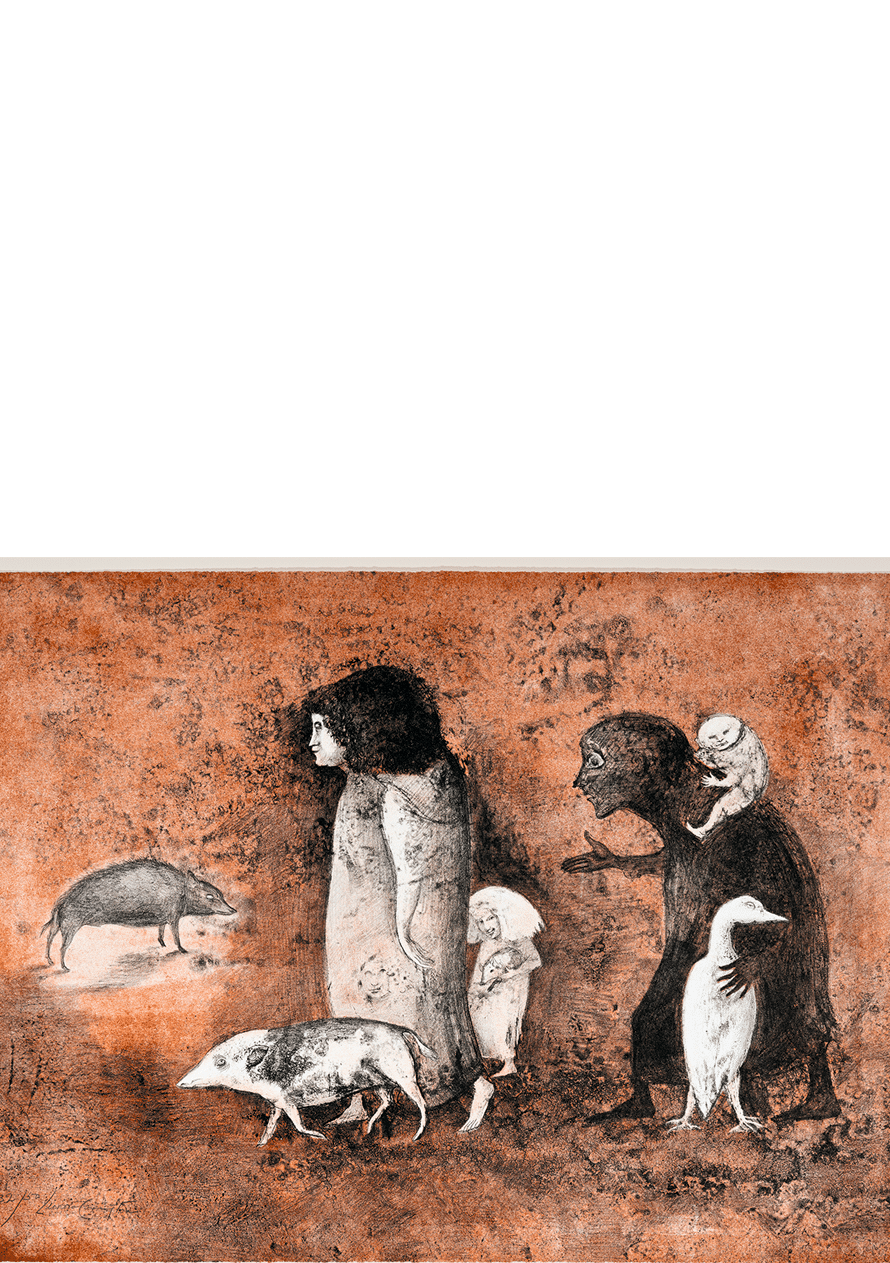
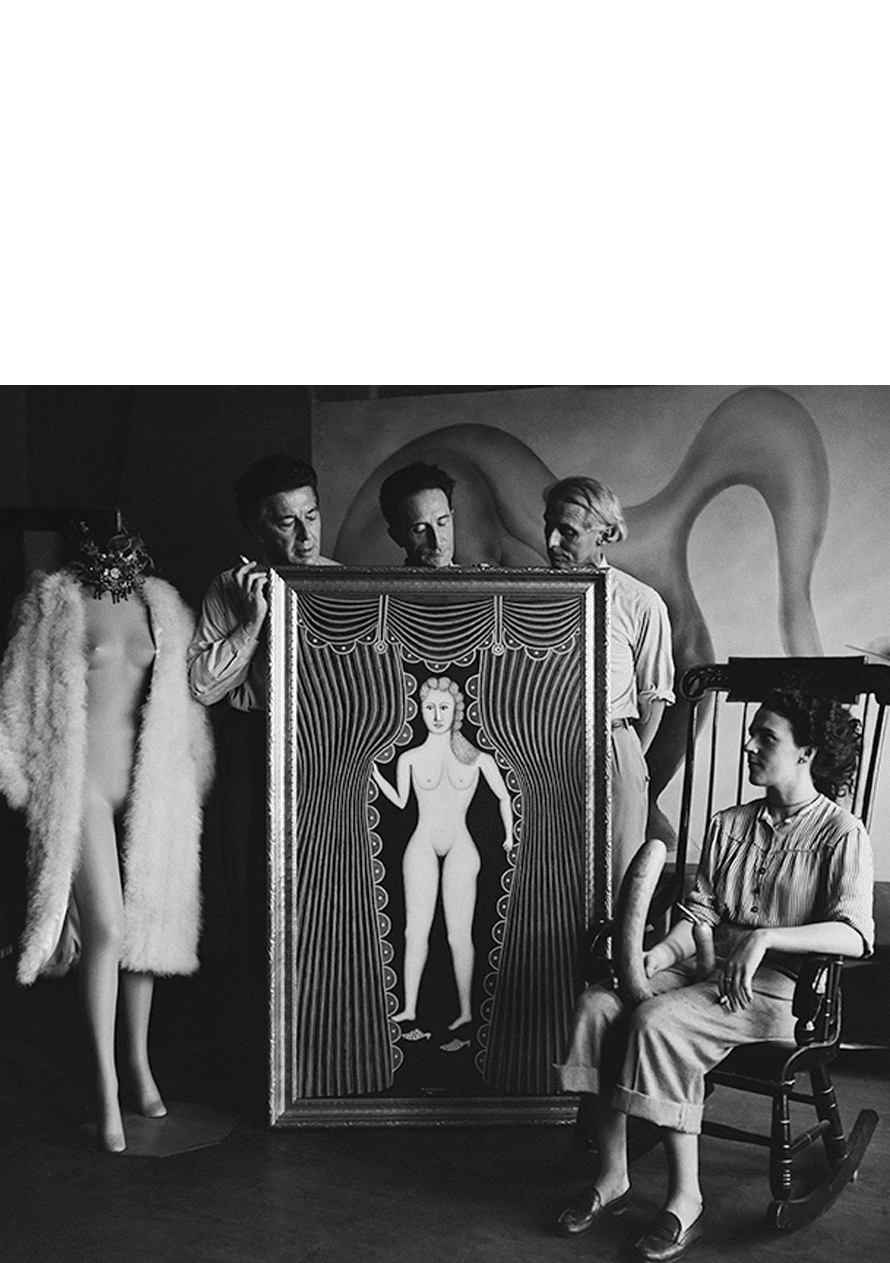
Leonora Carrington (Lancashire, England, 1917- Mexico City, 2011) was one of the most prominent artists of the Surrealist movement. Painter, sculptor and writer, her work is known for merging autobiographical and oneiric elements.
She arrived in Mexico in 1942, leaving behind boarding schools run by nuns, psychiatric hospitals and failed marriages. Here she found a second homeland and a new life: she got her Mexican citizenship; joined the feminist movement; formed a family together with Hungarian photographer Emir “Chiki” Weisz; became a part of the group “Poesía en voz alta” alongside Octavio Paz and Juan José Arreola; made brief appearances in several films; and devoted herself to understanding the worldview of indigenous cultures, the rituals around the dead and the shamanic metamorphoses that influenced her work.
The house in the Roma neighborhood where she lived for 61 years has been turned into the first museum dedicated to her work.
Ulises did not want to be a hostage of his passport. He wanted to be and he became a universal artist. All artists are countries in themselves. His passport is just a fingerprint.13
João Fernandes, Deputy Director of the Museo Nacional Centro de Arte Reina Sofía
Ulises Carrión (San Andrés Tuxtla, Veracruz, 1941- Amsterdam, Holland, 1989) was a writer, editor, poet and theorist of the international artistic avant-garde. He is considered the most important conceptual artist that Mexico has offered to the world.
He lived in France, Germany, England and Holland. In 1975 he became co-founder of the In-Out Center, a space managed by independent artists in Amsterdam; he also founded the bookstore-gallery Other Books And So, whose purpose was to present, produce and distribute publications that Carrión called “non books, anti books, pseudo books, quasi books, concrete books, visual books, conceptual books...”, since they were not literary texts or related to art, but could be considered a work of art in themselves.
The largest retrospective of his work to date took place in 2016, which was first exhibited at the Museo Nacional Centro de Arte Reina Sofía, in Madrid, and then at the Museo Jumex in Mexico. Although his work is still not widely known in Mexico, it is continuously studied as a cult object in many other countries.


Rosario Castellanos (Mexico City, 1925-Tel Aviv, Israel, 1974) occupies a place among the most renowned Mexican writers, nationally and internationally. She was a pioneer of Latin American feminism cultivating all literary genres brilliantly: she wrote eleven poetry collections, three novels, plays, stories, essays and journalistic texts.
Her work was always strongly imbued with an autobiographical tinge, and stood out for her sharp criticism towards a society defined by social disadvantages.
During her childhood in Chiapas, she witnessed the vulnerability of indigenous groups and in her role as a woman writer, diplomat, professor and mother she faced the difficulties of standing out in a field governed by men.
A woman ahead of her own time, she stood up against the marginalization of women, the objectification of the female body, the reduced number of women in professions considered exclusive to men, the wage gap, the mystification of motherhood and the prejudices that weigh against Mexican women.
Denunciation against discrimination marked the essence of her narrative, which is illustrated in El eterno femenino, Balún Canán (Chiapas Award, 1958), Ciudad Real (Xavier Villaurrutia Award, 1960), The Book of Lamentations, Álbum de familia or Poesía no eres tú. She was honored with the Sor Juana Inés de la Cruz Award (1962), the Carlos Trouyet Prize for Literature (1967), and the Elías Sourasky Prize (1972).
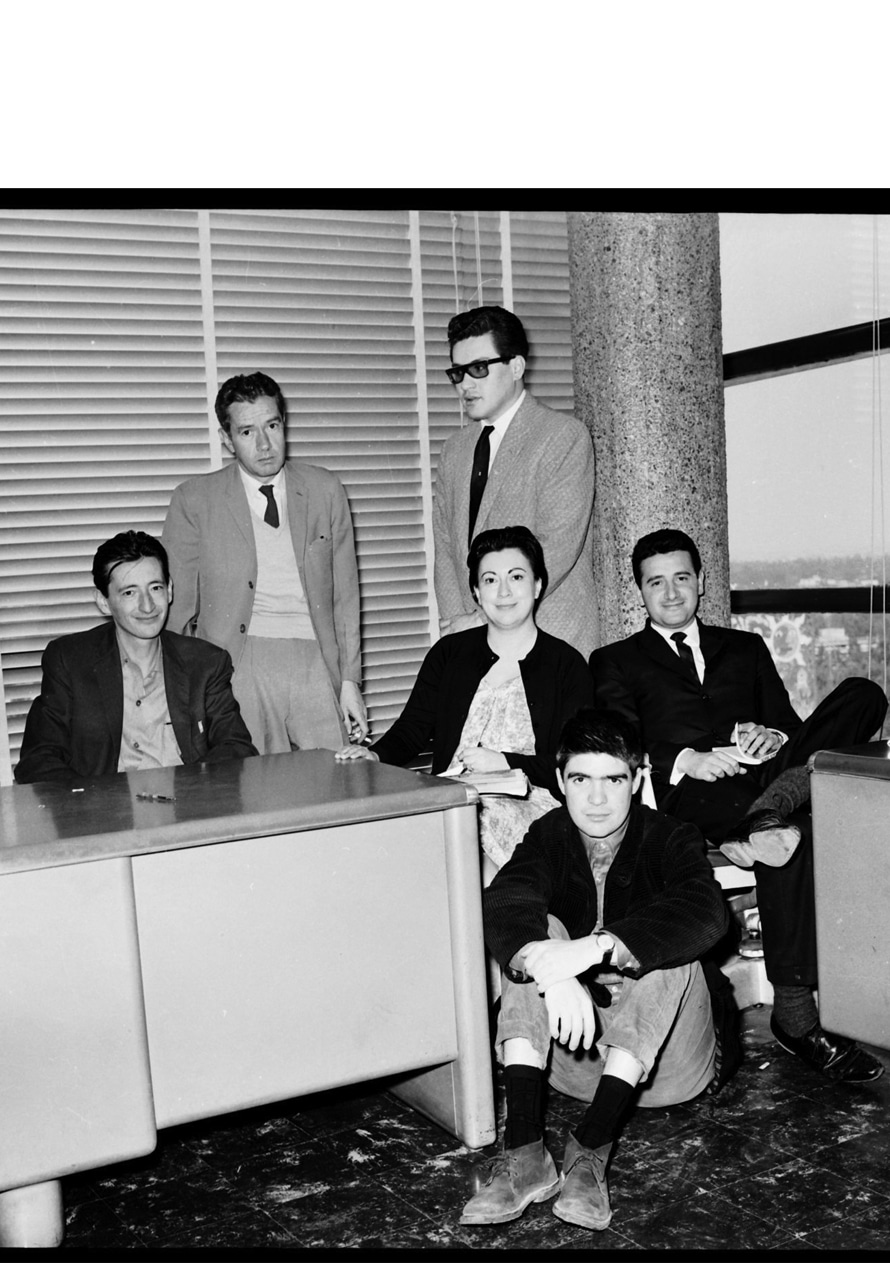
From Berlin, the city where artist Mariana Castillo Deball (Mexico City, 1975) lives and works, she has dedicated herself to relate science, archeology and visual arts to create her own vision of the world. This long process of research has resulted in a body of work that includes installations, sculptures, engraving, photography, performance, publishing projects and a series of artifacts that look into the role of objects to understand identity and the construction of history.
Finding Oneself Outside (2019) was her first individual production exhibited in a museum in the United States, which arrived at the New Museum in New York. Other important exhibitions have been: Petlacoatl (2018), at the Logan Arts Center in Chicago; Pleasures of Association, and Poissons, such as Love (2017), at the Galerie Wedding in Berlin; and ¿Quién medirá el espacio, quién me dirá el momento? (2015), at the Museum of Contemporary Art of Oaxaca.
Her proposal and career have been honored with the Prix de Rome (2004), the Zurich Art Prize (2012), and the Henry Moore Institute’s grant (2012).
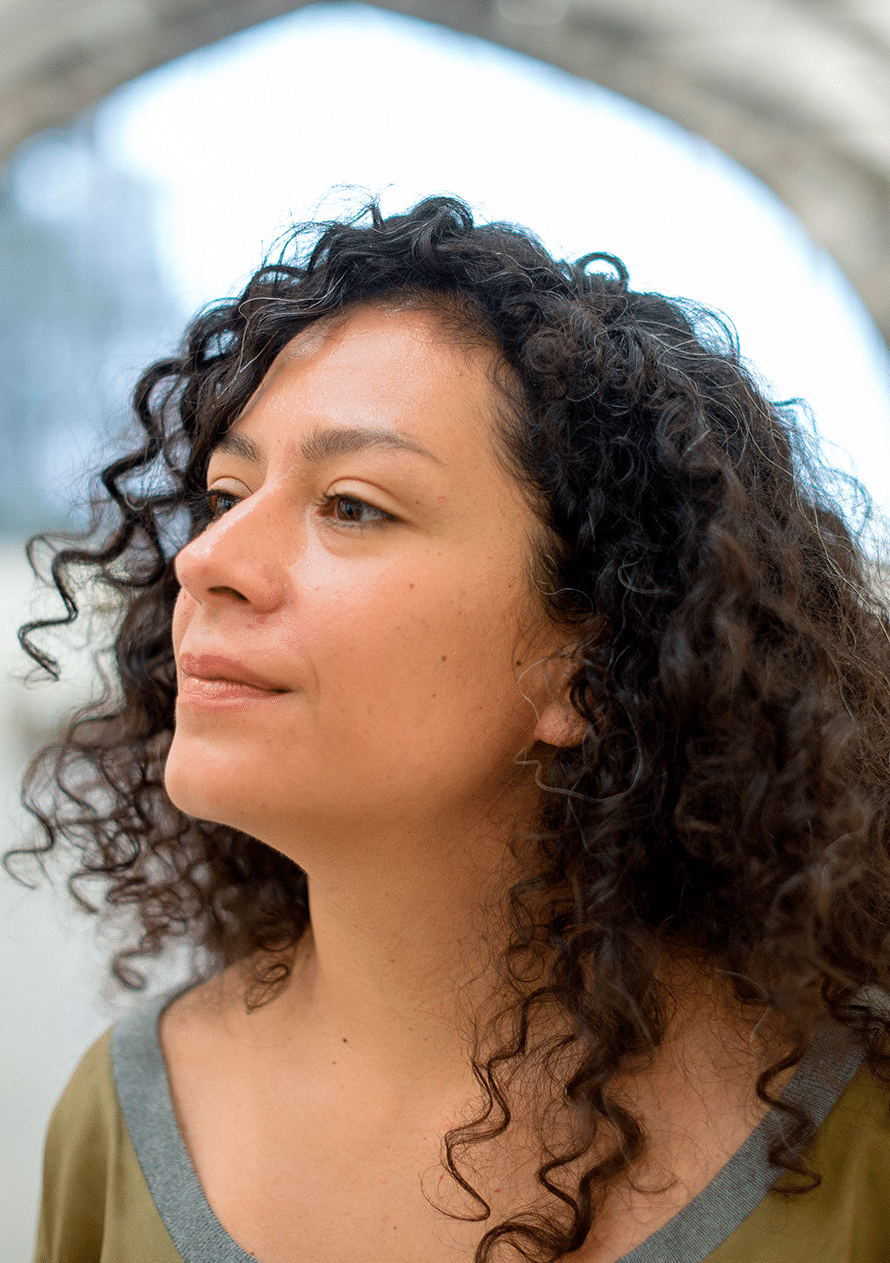
Every 2nd November the petals of this flower are used in the offerings to guide the dead on their way to visit the world of the living. Its name in Spanish comes from the Nahuatl cempoalxochitl, which means “flower of twenty petals”.
The ceremonial and medicinal uses of this plant are known in Mexico since pre-Hispanic times; in some places of our country it is still used in traditional medicine as a remedy for digestive, respiratory and ocular diseases. Its antibacterial, antifungal and antioxidant properties are also well documented.
In addition to its symbolic and traditional value, Mexican marigold has acquired global relevance thanks to its use, recently discovered, in the manufacture of carotenoids, a natural pigment widely used in the agri-food industry; this dye is used to intensify the orange hue of various foods and cosmetics.


Ever since the first pre-Hispanic cultures in Mesoamerica, shamans have been present in indigenous communities playing a role in finding solutions to social, physical and spiritual issues. They are custodians of words and safeguard ancestral knowledge.
One of the cradles of this tradition in Mexico was the lineage of graniceros, lightning ritualists, who were former servants of Tláloc, god of rain.
Shamans have different specialties: there are bone healers, midwives, fright-scarers or autochthonous psychologists dedicated to psychological disorders, among others; as well as the nahuales, considered guides. For many indigenous communities they serve as leaders, wise men, judges and teachers who practice and teach the invisible.
Many are known for distancing themselves from allopathic methods to rescue traditional healing, since they know plants, honor them and use them as a remedy for body and soul.
Shamanism lives in the memory of ancestors, whose knowledge is passed on orally, preserved in tales, myths, legends and traditions rooted in the native peoples that have survived westernization in our country such as the Nahua, Maya, Zapotec, Mixtec, Huichol, Otomi, Chontal, Yaqui and Tarahumara, to mention a few.
In this context, the figure of the shaman is configured as part of history and it is said that he brings together two realities or two worlds.
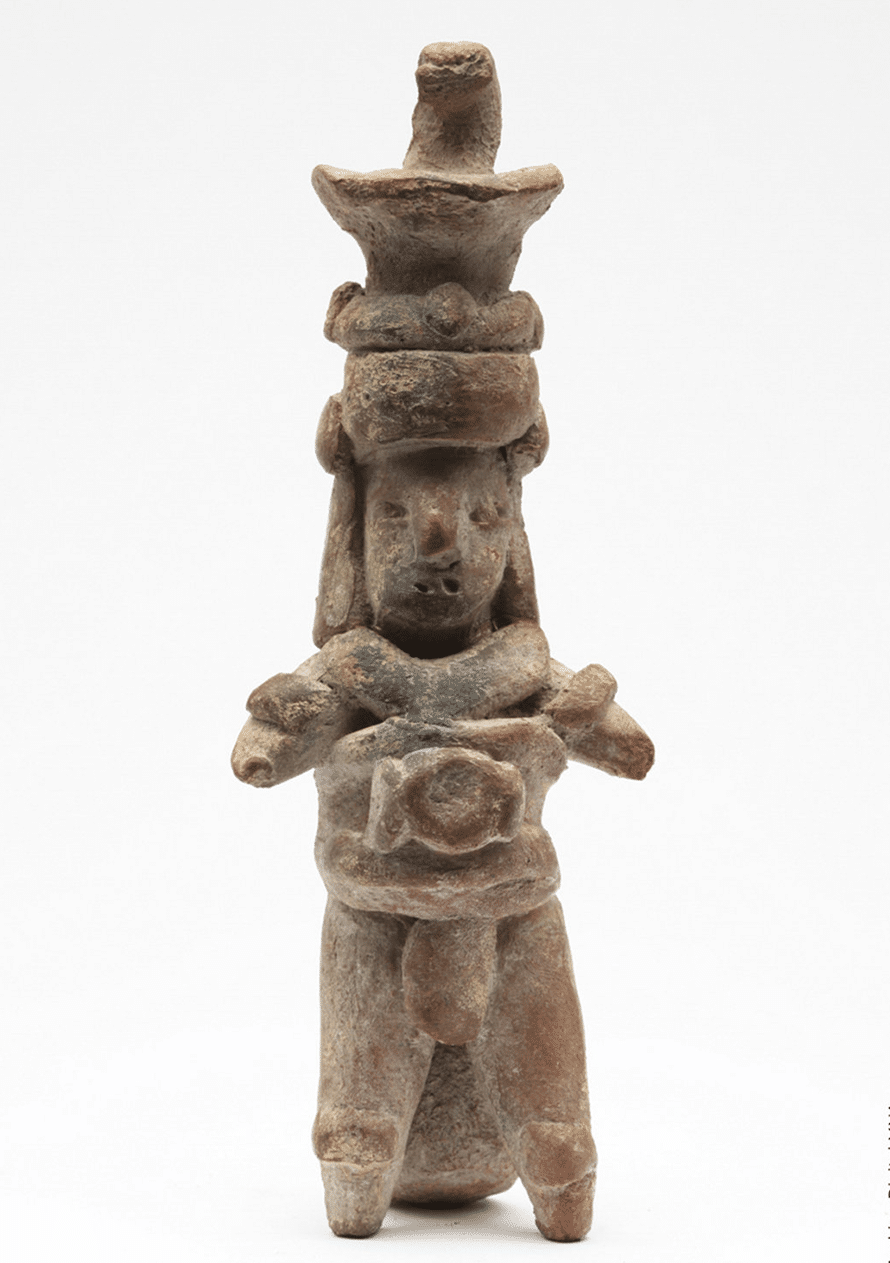
Considered the national sport, charrería is a set of equestrian skills typical of jockeys —charros— that take place in a ring known as the lienzo charro.
The origin of this practice dates back to the 16th century, in gatherings between members of different estates during the boom of cattle ranches. That is why the Mexican equestrian tradition highlights the handling of livestock while riding horses, as well as the use of saddle and rope.
Charros, dressed in their elegant suits, show off their cowboy skills with risky luck during charrerias, including the “Step of Death”; while escaramuzas, their female counterparts, combine riding with dance and perform synchronized choreographies dressed as female revolutionary soldiers known as Adelitas.
In 2016, UNESCO registered charreria in the list of Intangible Cultural Heritage of Humanity. In Mexico there are approximately two thousand events a year of this sport, which is also practiced in the United States, Canada, France, Panama, Cuba and Japan.


Carlos Antonio de Padua Chávez y Ramírez (Mexico City, 1899-1978) was a composer and orchestra conductor, a fundamental piece of the nationalist musical movement, renowned as a leading figure of musical art in the world.
According to experts, Carlos Chávez’s legacy to 20th century music is mainly composed of Sinfonía de Antígona (1933), Chapultepec (1935), Sinfonía india (1935), 10 Preludes for Piano (1937) and his Concerto for piano and orchestra (1938).
He is also known as an essential promoter of Mexican musical life. He founded the Symphony Orchestra of Mexico in 1928, and the National Symphony Orchestra in 1937. He was named Knight of the National Order of the Legion of Honor of France in 1932; and on May 15, 1943 he was inducted as one of the charter members of El Colegio Nacional.
“I was born a boxer”,14 said Julio César Chávez, telling the story of how his right punch led to his mother breaking her water to be born in Ciudad Obregón, Sonora, in 1962.
He took part in more than 200 rural fights as an amateur before his debut in 1980; four years later he won his first championship in the World Boxing Council (WBC) super featherweight division.
The “Caesar of Boxing” is known as the best boxer that Mexico has given to the world and his name features in the list of the 10 best in the history of this sport. Over the course of his 25-year career he won five world titles in three different weight divisions: super featherweight, lightweight and super lightweight. He earned 107 victories —86 by knockout—, six defeats and two draws.

Its name comes from the Nahuatl word chiactic, which means “thing full of oil”. It is an herbaceous plant of the Lamiaceae family that contains a high concentration —even greater than that of salmon— of alpha-linolenic omega-3 fatty acid.
The Maya and Aztecs considered it the ideal food for warriors, a source of energy for long journeys. The Tarahumara, called “the people born to run”, are nourished with izkiate, an energy drink made from chia seeds.
Chia is becoming one of the most popular superfoods thanks to its nutritional properties.
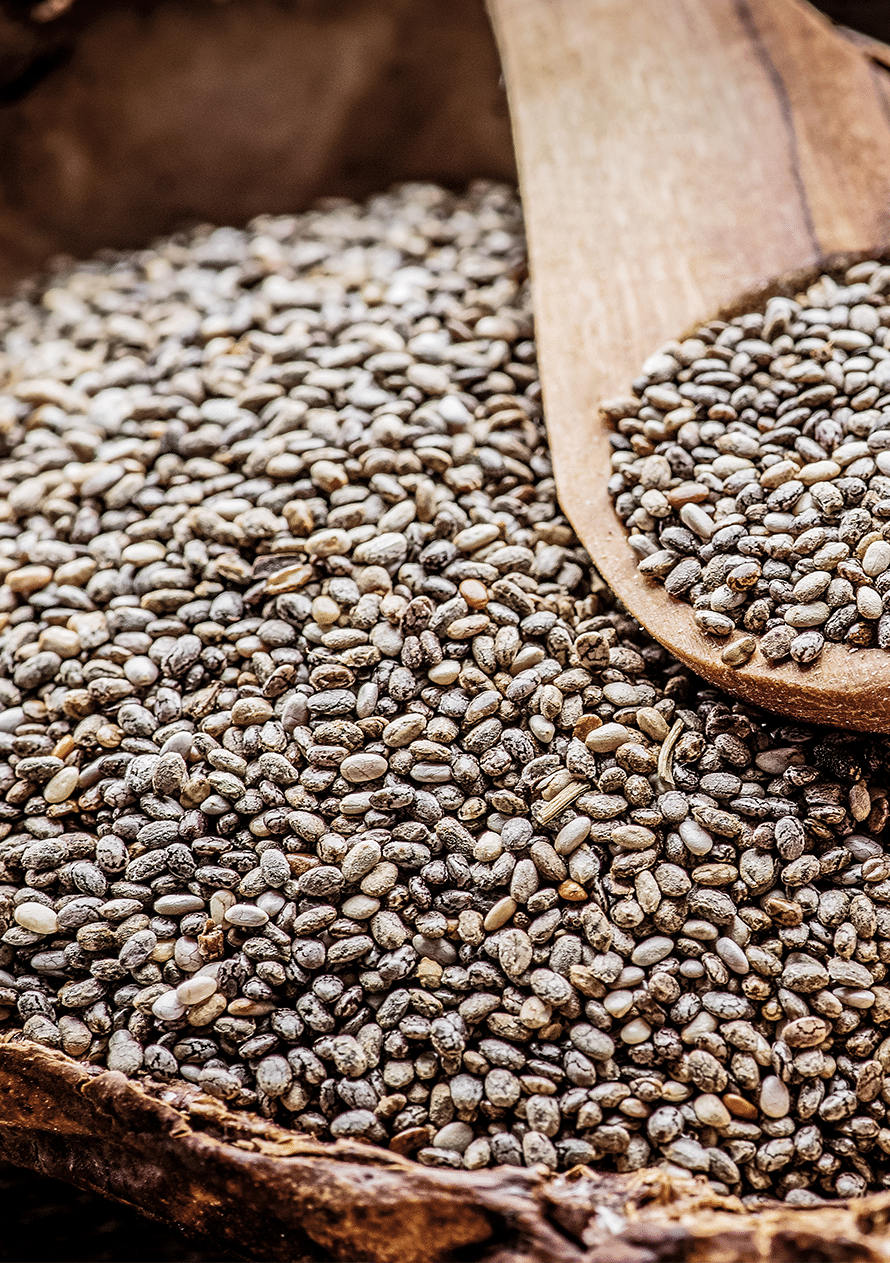
The Maya obtained tzictli from the resin extracted from the bark of the sapodilla tree —also known as the “chicle tree”— and used it for chewing, to clean their teeth, and as a distraction from hunger and thirst.
The industrial development of chewing gum, as we now know it, began in the United States at the end of the 19th century. The story tells that General Antonio López de Santa Anna offered a ton of tzictli resin to inventor Thomas Adams, who, without much success, tried to use it to manufacture tires. Upon knowing its use as a masticatory, Mr. Adams experimented by mixing it with paraffin and thus invented a chewable product that he began to market in 1869. Years later, flavor was added to the mixture and company Adams New York Gum took off.

This dish is made with tortilla chips, fried or toasted, bathed in green or red chili sauce. Its origin is a legacy of the culinary richness of the inhabitants of pre-Hispanic Mexico, who took advantage of all the food, including hardened tortillas left over from the previous day, which they softened by soaking them in chili sauce.
According to philologist and historian Ángel María Garibay, the word chilaquiles comes from the Nahuatl chilaquilli, a word composed of chilli (chili) and aquilli, which means “to be within something”.
Nowadays they have become an ideal breakfast food. Crunchy or soaked in the sauce, they are served with shredded chicken, chorizo or egg, sprinkled with cheese and a dollop of cream.

Chili is the king of Mexican cuisine as it provides smell, color and flavor to all our dishes. Red, green, yellow, orange or black, those that are hot and those that are not... it is estimated that there are between two and three thousand types of chili in the world.
Its origin is Capsicum annum, whose oldest evidence are the seeds in the Coxcatlán cave, in the region of Tehuacán, Puebla, dating from between 6900 B.C. and 5000 B.C.15
It is one of the ingredients of the New World that sparked the most curiosity in Spaniards, since indigenous people paid tribute to Tlatlauhqui cihuatl ichilzintli, the “respectable lady of the red little chili”.
In addition, it was commonly used for its medicinal properties: cavity disconfort was cured by pressing a hot chili with salt against the infected tooth, chili accelerated labor, it was a remedy for constipation, and even served against the “evil eye”.

The traditional chiles en nogada can be enjoyed in September, the month of national festivities in Mexico. This dish, originally from Puebla, includes more than twenty ingredients.
There are two legends regarding their origin: the first attributes their invention to the nuns of the Santa Mónica Convent, who created a recipe to celebrate the birthday of Iturbide and the triumph of his army in 1821; using seasonal ingredients such as poblano chili, pomegranate and walnut to portray the colors of the flag of the Three Guarantees Army.
The second legend was divulged by writer Artemio del Valle Arizpe, who in his book Sala de tapices stated that the Three Guarantees Army had three soldiers whose brides lived in Puebla; after their heroic deed the young women were anxious to celebrate the return of their lovers, so they decided to welcome them with a big banquet. Each one chose an ingredient that represented a color of the flag and, with the blessing of St. Paschal Baylon, they created chiles en nogada.
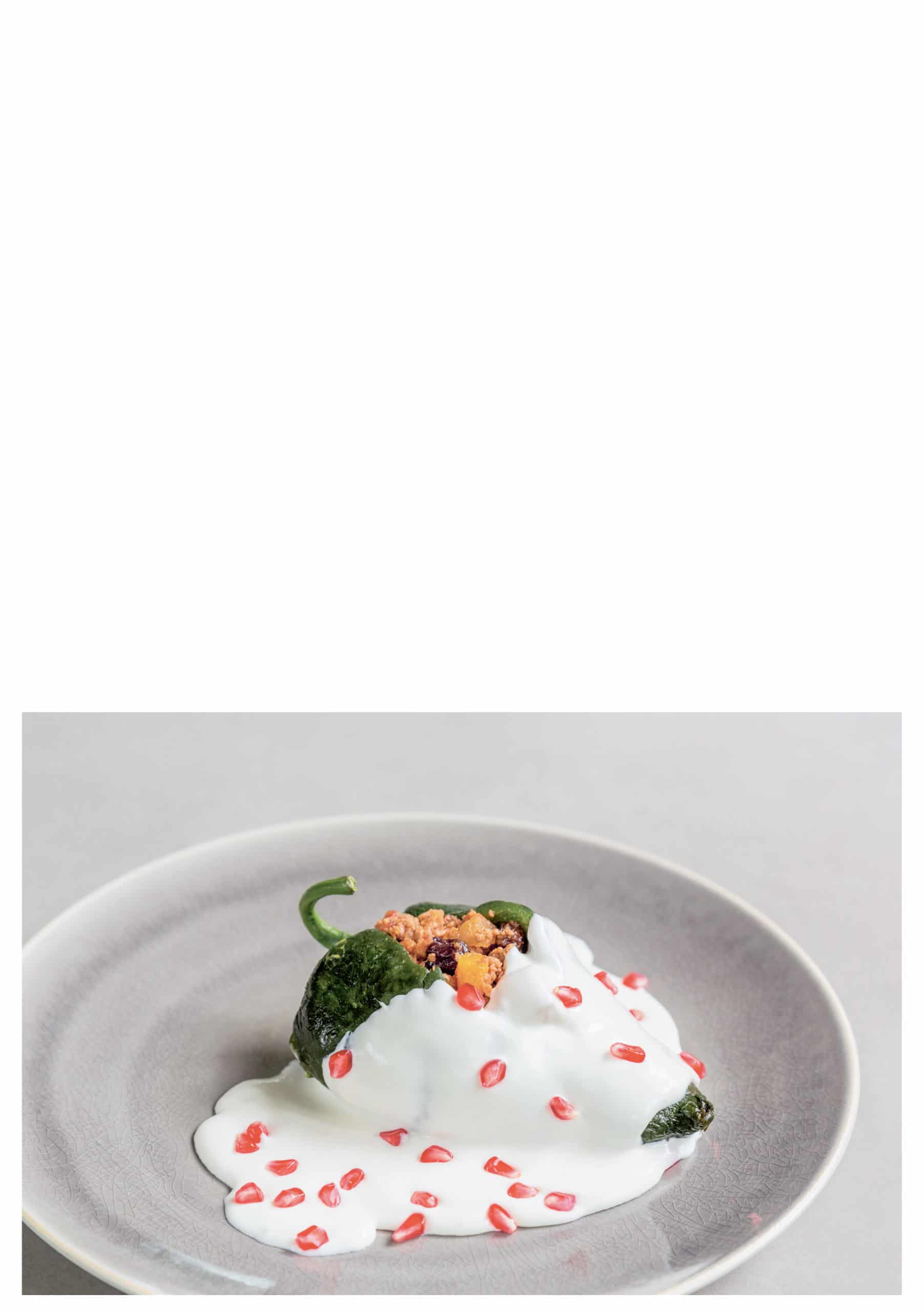
A woman with fiery and expressive eyes, olive complexion, black and fine hair, small feet, flexible waist [...], who could read, sew and cook in the style of the country, who tapped her feet to jarabes and other sones at the fandangos.16
Manuel Payno
The China Poblana is one of the symbols of Mexican identity most reproduced in history. Thousands of paintings, prints and photographs show her luxurious costume: a cloth skirt or petticoat decorated with the colors of the flag and the national eagle embroidered with sequins, a blouse with embroidered flowers, a shawl and red shoes. Always combed with braids interlaced with colored ribbons and sometimes wearing a charro hat.
The image of la China has its origins in a type of women that gained popularity in the mid-19th century. They were independent Mexican mixed race women, with very little attachment to the social and love conventions of the colonial era, captivating foreigners with their attitude and provocative and carefree dress style.
In 1919 the famous dancer Ana Pavlova visited Mexico and, in her eagerness to rediscover the country’s dance roots, she created the show Fantasía mexicana, where the Russian ballerina danced the Mexican Hat Dance in pointe shoes, dressed as China Poblana, accompanied by dancer Alexandre Volinine dressed as a charro. From then on, the image of la China was adopted by the most nationalist official dictates to represent the graces and virtues of Mexican women.

Aztec agriculture was based on the cultivation of chinampas: a polyculture system created on an artificial island over lacustrine land, making it independent from irrigation or rainwater to remain constantly hydrated. This enriches the soil, makes it more fertile and rich in organic nutrients, deposited in the waters by local fauna and other plants.

This method provided food to all inhabitants of the old Tenochtitlán, but became lost over time and due to urbanization. After years of neglect and thanks to the work of ecological entrepreneurs, the last crops found in Xochimilco and Tláhuac, in Mexico City, are re-emerging as an important form of urban agriculture.
In 2018, the chinampa agricultural system of Mexico City was recognized by the Food and Agriculture Organization of the United Nations (FAO) as one of the thirteen new landscape environments celebrated as Globally Important Agricultural Heritage systems (GIAHS) and it is emerging as one of the great options for sustainable cultivation in the world.

Within the vast variety in Mexican cuisine, Yucatán’s gastronomy is one of the richest, as the result of the mixture of Mayan ingredients with flavors brought from Europe, the Caribbean and the Middle East, and whose most famous dish is cochinita pibil.
Pibil comes from the Mayan and means “buried”. This dish is prepared with pork meat marinated in annatto and wrapped in banana leaves; it is cooked slowly, for several hours, on hot stones inside a hole in the ground covered by leaves. It is served in tacos or tortas, garnished with red onion infused in sour orange and habanero chili.
The origin of cochinita pibil is pre-Hispanic; it is similar to a dish made with venison, pheasant or wild boar, which was typical of hanal pixán or “food of the souls”, a tradition of the Maya people held to celebrate the dead.
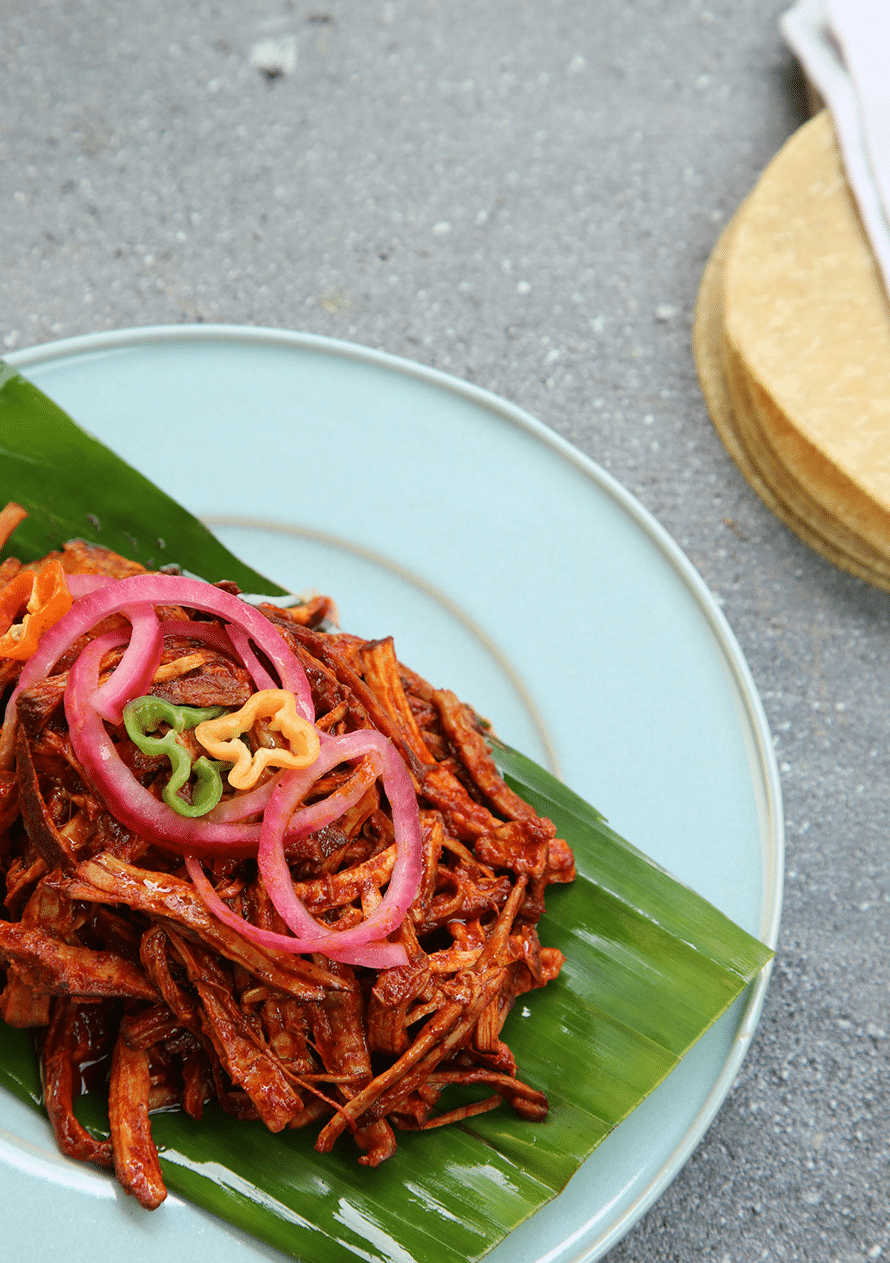
In 2005 the young civil engineering students Joel Sosa Gutiérrez and Sergio Galván, patented a polymer concrete made of cement, aggregates and additives, the structure of which allows the passage of light, making it possible to build more resistant, less heavy and almost transparent walls. These qualities offer environmental advantages such as the reduction in the use of artificial light and the mitigation of the passage of heat, which means a reduction in greenhouse gas emissions.
Renowed national and international architects adopted the use of translucent concrete in floors, walls, kitchen counters, sinks, skylights, screens, wainscots, false windows and pots, among others.


Ever since Cortés’s armored invaders came jangling into their homeland […] the Tarahumara have responded to attacks by running farther and faster than anyone could follow, retreating ever deeper into the Barrancas.17
Christopher McDougall, Born to Run
The Tarahumara, inhabitants of the Copper Canyon in the state of Chihuahua, call themselves Rarámuris, which means “those of winged feet”. For this lineage, running has been their way of survival and vocation. Able to cross up to 100 kilometers in just nine hours, they are known as the best runners in the world.
In 1928, a couple of Rarámuris barged into the Amsterdam Olympic Games to take part in the 42-kilometer marathon. The logic of the Mexican committee was impeccable: the skills of the Rarámuris would finally put Mexico on the podium, but that was not the case. Forced to change their sandals for tennis shoes and unable to understand why the race lasted so little time, they placed last because they did not want to leave the track.
The light-footed people took several decades to understand the mechanism of the competitions, but once they did it sparked the “Tarahumara phenomenon”, when athletes such as Juan Herrera, Arnulfo Quimare, Silvino Cubarese and the Ramírez family integrated by Santiago and his children María Juana, José Mario and María Lorena Ramírez —who runs dressed in traditional attire— attracted world attention by dominating the first places in the most important ultramarathons, running with rubber sandals, without specialized sports training and with a diet based on maize.

Miguel Covarrubias (Mexico City, 1904-1957) was a caricaturist, painter, anthropologist and cultural animator, whose journey through art ranged from portrait of the people to “satirical praise” caricatures of celebrities, or other topics such as dance promotion.
He began his artistic career at age 14, drawing caricatures for minor publications. At 19 years old, “El Chamaco”, as he was known, got a job at the Mexican consulate and traveled to New York, where he soon met writer and photographer Carl van Vechten, who invited him to publish his first cartoons in Vanity Fair magazine —and later Vogue—, where he worked from 1924 to 1936.
Covarrubias was renowned in the New York circle for his celebrity caricatures and cover illustrations, which earned him worldwide fame. In 1938 he received the Art Directors Club Award for a cover with surrealist style created for Vogue magazine. He also designed theatrical sets, illustrated books and painted, while studying a degree in Anthropology.
He was greatly passionate about art and culture, with multiple artistic interests. On his return to Mexico, in the 1940s, he was appointed director of the Dance Department at the National Institute of Fine Arts (INBA), where he promoted modern dance.

Let it be inscribed here the day, month, and year of my death. I beseech […] my beloved sisters, the nuns here now and those who shall be, commend me to God: I, who have been and remain, the worst that has ever been. I beg their pardon […]. I, the worst woman in the world.18
Sor Juana Inés de la Cruz
Juana Inés de Asbaje y Ramírez de Santillana (1648-1695) was born in the Hacienda of San Miguel Nepantla, in the State of Mexico. Erudite, writer and nun narrates in her letter Reply to the Most Illustrious Sor Philotea de la Cruz how she learned to read and write at age three; how at five years old she expressed her desire to go to University and wrote her first poem when she was eight years old.
Considered the Tenth Muse, she was the first great poet of Latin America, but her work was not limited to lyrical poetry, she also explored prose and essay, and wrote several plays. UNESCO declared her literary heritage as Memory of the World.
In addition to being one of the most important writers of the 17th century, she distinguished herself as an advocate of women's rights to access intellectuality. Entering a convent was her only option in order to dedicate herself to writing, so with the conviction that the mind should be filled with ideas rather than beautiful things, she donned the habit in order to stand up for her right to think.

Abraham Cruzvillegas (Mexico City, 1968) debated between becoming a butcher or a singer and opted for art. He studied pedagogy while self-training himself to become a caricaturist. With time and much artistic search, he earned a place as one of the most renowned Mexican artists in the world of contemporary art.
Cruzvillegas speaks of self-construction as a principle of his creative process, where playing and inventive improvisation prevail. Resembling a controlled Diogenes syndrome, his study focuses on the accumulation of all kinds of objects, which he later uses in his works appealing to the chaotic nature of creation.
His work, full of humor and political sense, includes sculpture, painting, drawing, installation and video. He has also cultivated writing and is author of songs and texts that reflect on art, politics and culture.
In 2015 he became the second Latin American artist to occupy the Turbine Hall of the Tate Modern in England with his work Empty Lot. He has been awarded the Prix Altadis d’Arts Plastiques (2006) and was the fifth laureate with the Yanghyun Prize (2012).

He was born in Mexico City in 1961. During his childhood, he debated between becoming a filmmaker or an astronaut. Everything was clear at age 12, when he received his first camera as a gift. Later, he was accepted at the National Autonomous University of Mexico (UNAM) where he studied Philosophy in the mornings and Film in the afternoons at the University Center for Film Studies (CUEC).
In 1991 he directed his successful debut film Sólo con tu pareja, which was followed by A Little Princess (1995), Great Expectations (1998), Y tu mamá también (2001) and Children of Men (2006), among others, in which he was also noteworthy as scriptwriter and producer.
After winning his first Academy Award in the Best Director category for film Gravity in 2014, his name was included in the Time magazine list of the 100 most influential people in the world.

While writer J. J. Abrams called him “Master of the Universe”, Cuarón described himself as a “film worker” and as such continued to build stories, until the night of the 91st edition of the Academy Awards in 2019, when Roma became the first Mexican film to win the Best Foreign Film category and he became the first director of a foreign film to win the Best Director award.
Considered a masterpiece, Roma transcended its multiple nominations and awards to become a cultural phenomenon that served to promote the creation of the first Bill of Rights for domestic workers, in the United States, and in Mexico.
In addition, its protagonist, Yalitza Aparicio became the first Mexican indigenous actress nominated for an Academy Award in the category of Best Actress. Her image has traveled the world, turning her into a media phenomenon that is breaking down stereotypes and has shed light on the importance of valuing indigenous communities and respect for their language.
Throughout her career, Minerva Cuevas (Mexico City, 1975) has found the raw material of her work in social and political research. Her disagreements and concerns —especially regarding environmental and ecological issues— have been captured in a proposal that goes beyond the frontiers of art by entering the field of social activism.
Assisted by painting, photography, sculpture, video, installation and public intervention actions, she criticizes and questions power relations and their social links, as well as the use of natural resources and the role of large corporations in food production.
To accomplish this, she resorts to irony, humor and the same tools that power structures use to impose their narrative: objects and images of everyday use, as well as the language of marketing and advertising.
Her work has been exhibited in important museums and galleries, among which are the Museo de la Ciudad de México, Museo Tamayo, Museo Jumex, Museo Universitario de Arte Contemporáneo (MUAC), the Institute for Contemporary Art in Berlin, the Centre Pompidou of Paris, the San Francisco Museum of Modern Art, and the Whitechapel Gallery of London.


